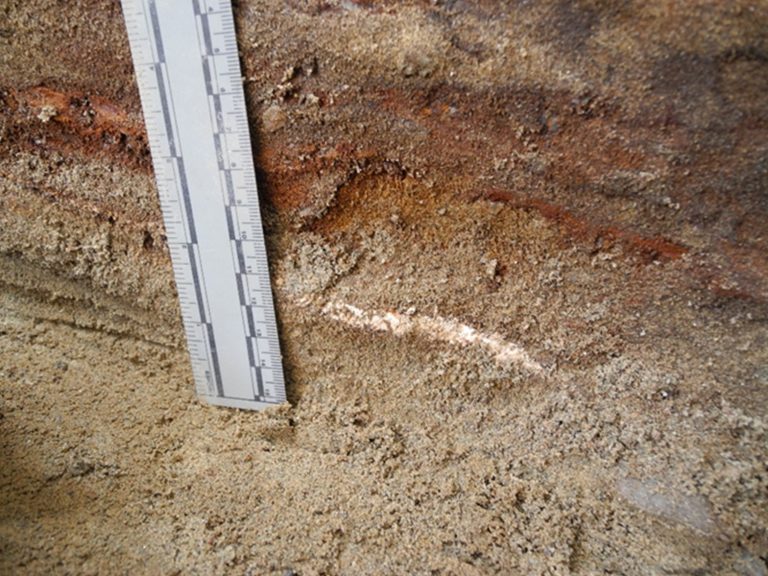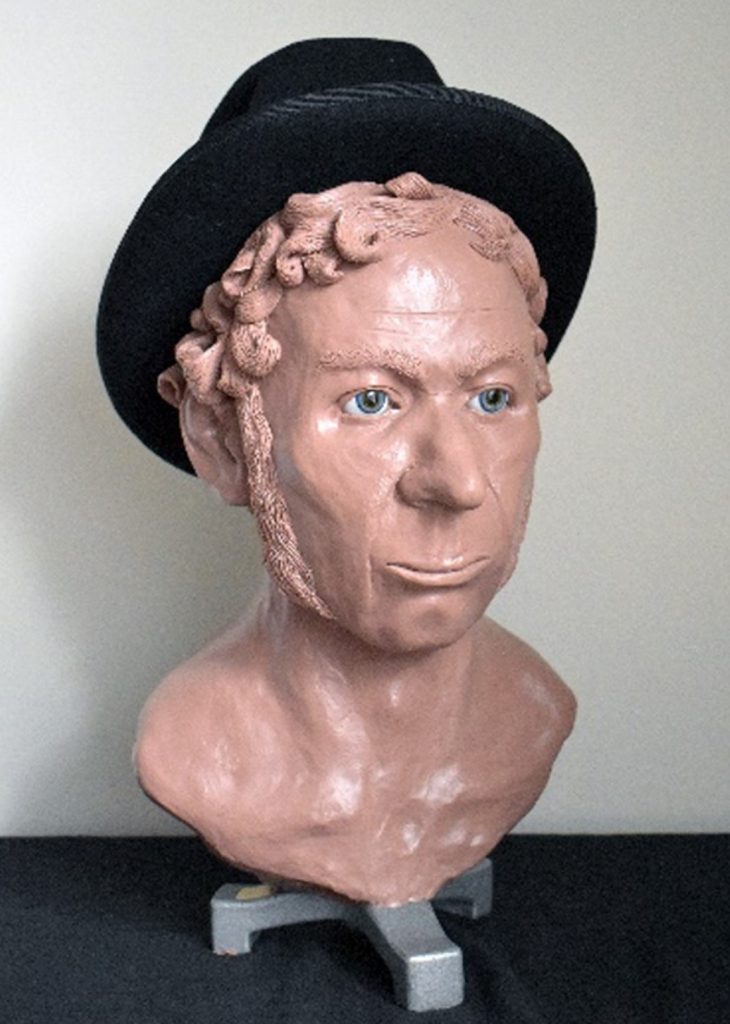This woman was found lying on her back, arms to her sides, hands on her thighs, feet to the east, and head facing south. Like many of the individuals excavated at the site, her remains are incomplete, but she stands out from the rest. Found beneath her skull in her grave was a mat of hair, and remnants of tissue were found in her cranium.
(Image source: Appleton & Hollinger)
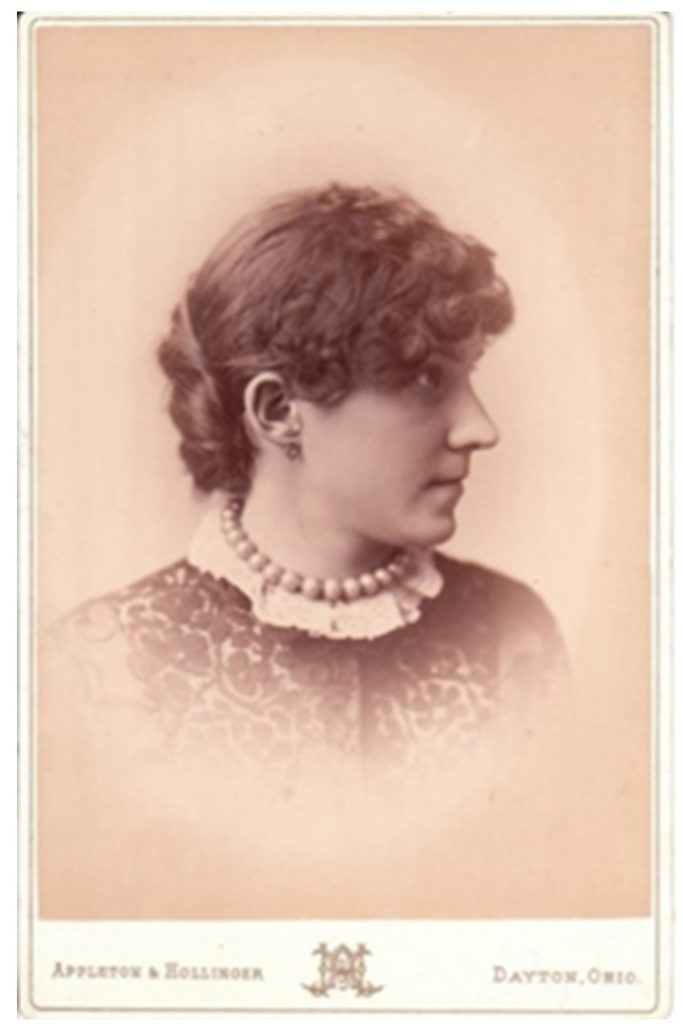
Hairstyle similar to that of the Maiden.
(Appleton & Hollinger)
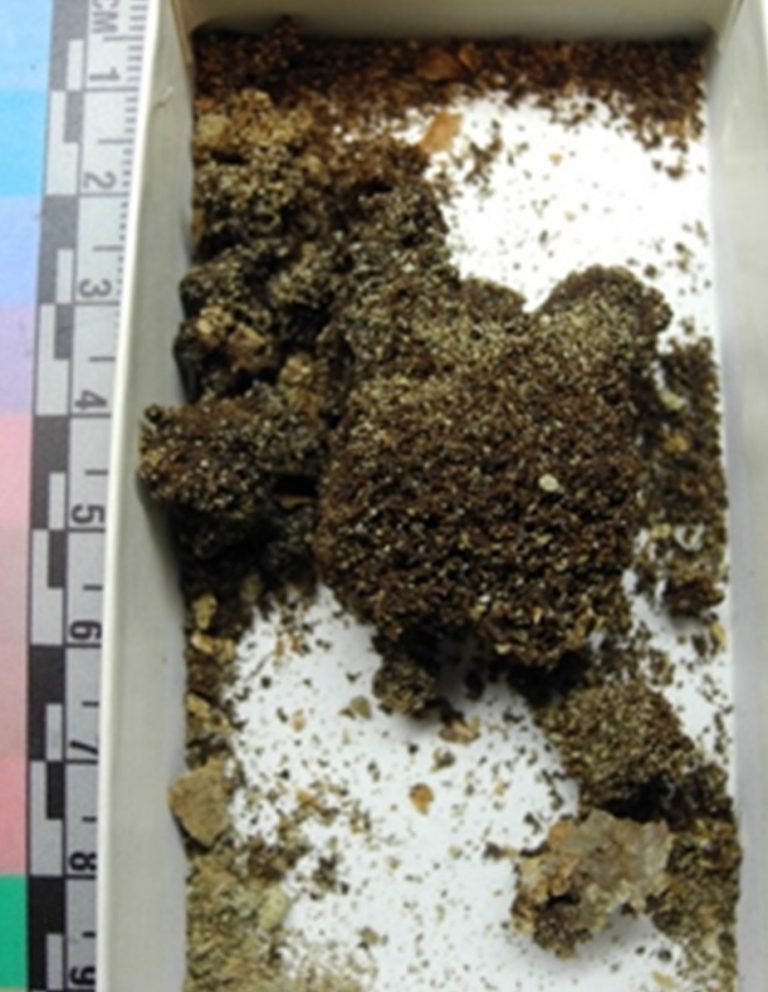
Preserved dried tissue from inside the skull.
(Young, 2017)
She’s the only person at the site to show this level of preservation. Her hair, pulled over one ear, bundled at the back, with curls framing her face, was a familiar style at the time. A substance likened in weight and texture to dried peat moss was found inside her cranial vault.
Who was she?
Probably between 21 and 29 years old when she died, right-handed, and 4’11” to 5’3” tall, she’d been sick or perhaps malnourished as a child, which was not uncommon for people in the early- to mid-19th century who survived to adulthood. Her general health seemed good, although she had some bad cavities and periodontal disease, and her joints show signs of wear and tear.
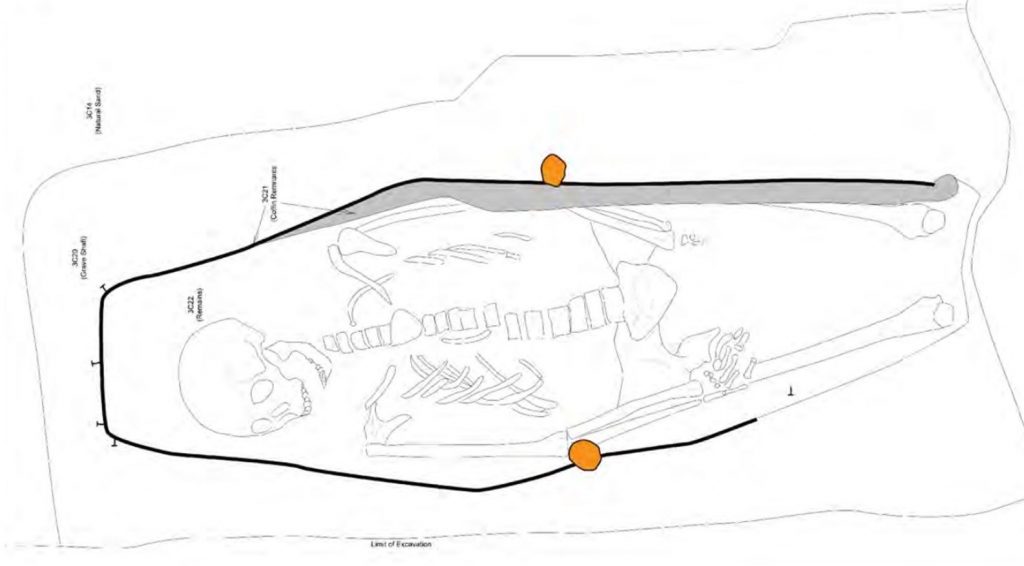
Diagram of Burial 2014-14.
(Mortimer, 2014)
What was she doing?
Did you know that your body adapts to how you use it? Tooth enamel, once altered, never regenerates, but bones do, changing over and over again, adapting to how you use them. Reading these changes helps me figure out what people in the past were doing. For our Maiden, the enamel on her front teeth shows chipping and there’s bony buildup on the bone surfaces inside her oral cavity, probably due to using her mouth as a third hand. I saw similar but more prominent changes on the teeth of a tailor from the site. Within her knee joints, there’s evidence that her anterior cruciate ligament (ACL) was drawn tight, and that her knees were positioned at a 45-degree angle continually over long periods of time. Can we presume that she was seated, legs slightly out, holding something between her knees?
(Image source: Gray’s Anatomy)
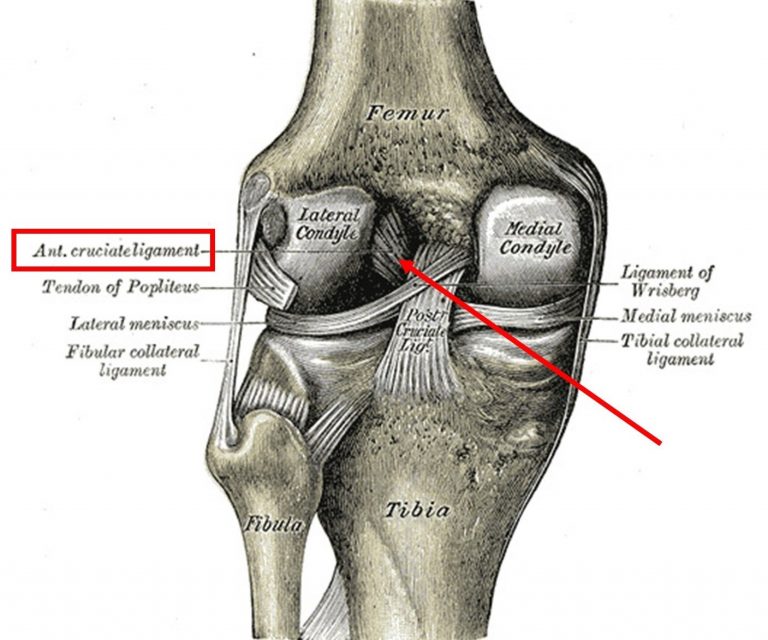
ACL attachments on the femur.
(Gray’s Anatomy)
So why a milliner or hatter?
The evidence suggests that the Maiden engaged in work similar to a tailor. Perhaps she was a seamstress. If that were the case, I’d expect her dental changes to be closer in appearance to those of the tailor. There’s another profession where pins, needles and threads were used, although perhaps to a lesser extent, and that’s a milliner. This was also one of the few jobs in the 1800s that women could occupy. It’s easy to imagine, the Maiden engaged in making a hat, a milliner’s head form held between her knees as she worked.
(Image source: 1822, Millinery Shop Paris by John James Chalon)
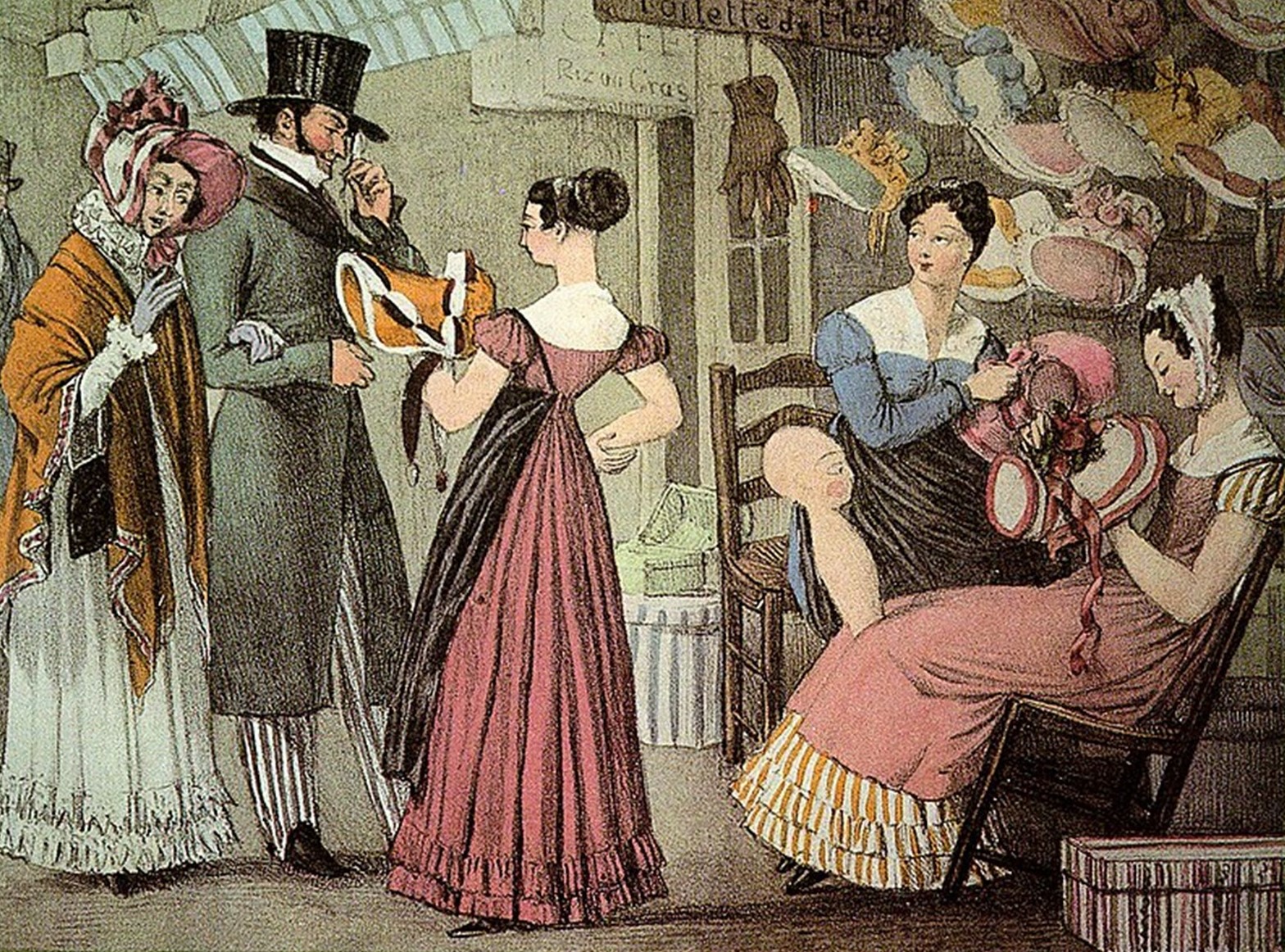
Depiction of milliner with a head form held between her knees.
(1822, Millinery Shop Paris, by John James Chalon)
What other evidence is there?
Did you know that mercury was used in early embalming as a preservative for soft tissue? Did you also know that milliners in the early- to mid-19th century used mercury to prepare skins and produce felt for hats? The mercury was absorbed by the milliners and prolonged exposure led to an accumulation in their central nervous system, including the brain, causing neurological issues. This inspired the phrase “mad as a hatter,” which was commonly used to describe individuals with mental instability in the 1800s.
It can therefore be argued that the reason why the Maiden, but no others found at the site, had well preserved hair and brain tissue is because, as a milliner, she had high levels of mercury in her system.
If she had prolonged exposure to mercury, enough to infuse a preservative quality in both her hair and brain, then we can imagine it had an impact on her physical and mental health. Whether she was “mad,” we’ll never know, but if exposure contributed to her death, she would have been in poor health for some time, possibly exhibiting memory loss, weakness, headaches, trouble sleeping, tremors and numbness in her hands, dizziness, lack of focus, emotional fragility, and fatigue. A sad outcome for such a maiden.
(Image source: Pixabay)
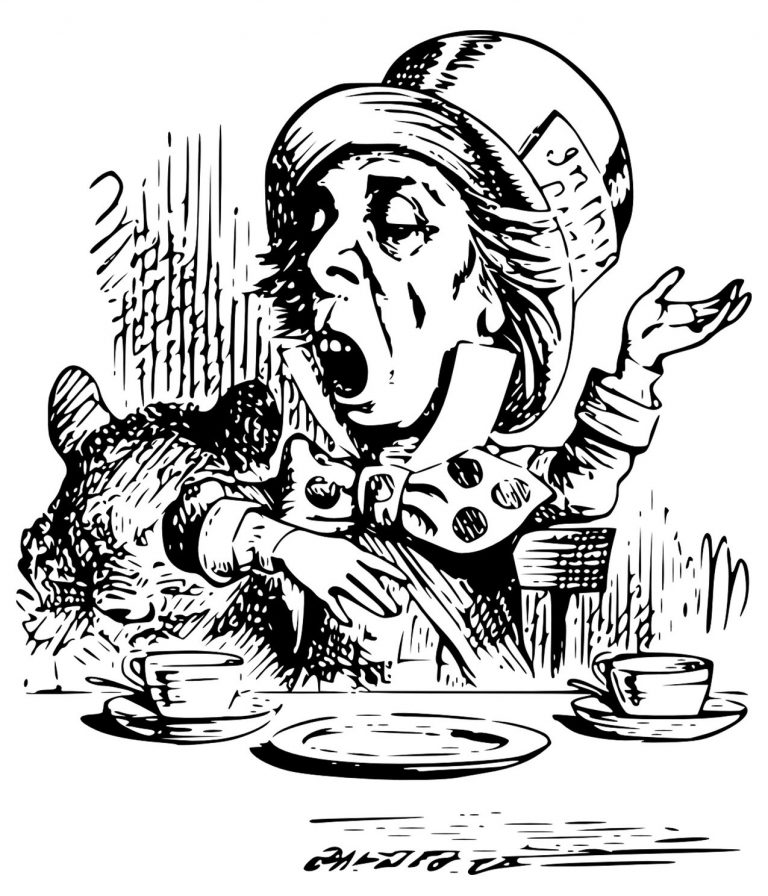
Mad hatter depiction.
(Pixabay)
Find out more
Read more about the findings in the Barrack Hill Cemetery in the blog series, Bone Detective: Mysteries of Those Found Beneath Downtown Ottawa.

Janet Young
Janet Young specializes in the study of human skeletal remains, and has been working at the Canadian Museum of History since 1994.
Read full bio of Janet Young
